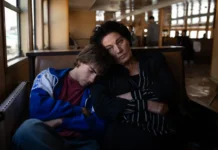Are you a fan of classic western movies? If so, then you must have heard of spaghetti westerns. These unique films were not only a popular genre in the mid-20th century but also had their own distinctive style and flair that set them apart from traditional Hollywood westerns.
But where did this name come from?
In this blog post, we’ll dive into the fascinating history of spaghetti westerns, explore their origins and evolution, and discover why they continue to captivate audiences worldwide. So grab your cowboy hat and saddle up for a wild ride through the world of spaghetti westerns!
What are the spaghetti westerns?
Spaghetti westerns are a subgenre of Western movies that originated in Italy during the 1960s. These films were typically low-budget productions that featured an American Wild West-inspired setting, but with Italian filmmakers behind them.
What set spaghetti westerns apart from traditional Western movies was their unique style and approach to storytelling. They often had more gritty, violent themes than classic Hollywood Westerns and used unconventional camera angles and music to create a distinct atmosphere.

The term “spaghetti” western comes from the fact that they were produced by Italian studios, which led to many of the films being shot on location in Spain due to its similar landscapes. The name was coined by critics who saw these films as cheap imitations of traditional Western movies.
Despite initial skepticism from audiences and critics alike, spaghetti westerns gained popularity both domestically and internationally due to their exciting action sequences and intriguing characters portrayed by stars such as Clint Eastwood in Sergio Leone’s “Dollars Trilogy.”
Spaghetti westerns have left a lasting impact on the film industry with their unique style and incorporation of international elements into an iconic American genre.
Where did the name come from?
The term “spaghetti western” might sound peculiar, but its origin is rather straightforward. It refers to a specific subgenre of western movies that were produced and directed by Italians in the 1960s and 1970s. The name is derived from the popular Italian dish, spaghetti, which humorously alludes to the films’ Italian roots.
These films were typically low budget productions shot in Europe, primarily Spain and Italy. While they followed standard themes of classic American Westerns such as gunfights, outlaws, revenge, and frontier justice; spaghetti westerns added their own unique elements like gritty realism, stylized violence and dark humor.

The name first gained traction among critics who initially used it as a derogatory term for these European-made western movies. However, over time “spaghetti western” evolved into an affectionate label for this distinct subgenre within film history.
Ironically enough though many people would come to appreciate the rawness of these films later on – appreciating them for what made them stand out compared against traditional Hollywood fare at that time. Thus began a fascinating chapter in cinema history where filmmakers from across the Atlantic put their own spin on an iconic American genre.
The first spaghetti western
The first spaghetti western was “A Fistful of Dollars,” directed by Sergio Leone in 1964. It starred a then-unknown American actor named Clint Eastwood, who would go on to become a major movie star.
Leone’s film was not the first Italian-made western, but it was the one that started the trend and defined what came to be known as the spaghetti western genre. The term “spaghetti western” itself is believed to have been coined by critics who were initially dismissive of these films.
What set Leone’s film apart from other westerns at the time was its gritty realism and unflinching violence. The protagonist, played by Eastwood, is an antihero with no qualms about killing for profit. This marked a departure from traditional Hollywood Westerns where heroes were idealized figures.

Despite being shot on a shoestring budget in Spain, A Fistful of Dollars became an international success and spawned two sequels: For A Few Dollars More and The Good, The Bad And The Ugly. These films cemented Leone’s reputation as one of Italy’s greatest filmmakers and helped turn Eastwood into a household name.
A Fistful of Dollars paved the way for countless imitators and established many of the tropes that continue to define modern Western movies today – including lone gunmen with no allegiances roaming across lawless frontiers seeking justice or revenge
The golden age of spaghetti westerns
The golden age of spaghetti westerns spanned from the mid-1960s to early 1970s. During this time, these types of films were incredibly popular among audiences worldwide who craved a new kind of Western movie.
Directors such as Sergio Leone and actors like Clint Eastwood became synonymous with the genre, creating classic movies like The Good, The Bad and The Ugly and A Fistful of Dollars.
These films had a unique style that set them apart from traditional American Westerns. They featured gritty realism, intense violence, and morally ambiguous characters. Additionally, they often used haunting soundtracks composed by Ennio Morricone.
Watch For a Few Dollars More (1965) Trailer
Spaghetti westerns were particularly successful in Europe where they were embraced by fans looking for something different than Hollywood’s typical offerings. Many European filmmakers sought to emulate the success of Italian directors like Leone which led to an influx of international talent working on these productions.
The golden age of spaghetti westerns was marked by innovation and creativity that brought new life to an old genre. These films continue to be beloved today for their distinctive style and timeless storytelling.
The fall of the spaghetti western
The fall of the spaghetti western came in the late 1970s due to several factors. One of them was the oversaturation of the market with too many poorly made films. The genre had become predictable, and audiences were losing interest.
Another factor that contributed to its decline was the emergence of new genres such as sci-fi, horror, and action movies that captured people’s attention. These new films offered fresh concepts and special effects that spaghetti westerns couldn’t compete with.

Additionally, economic changes affected film production in Italy during this time. There were labor strikes and inflation which led to a decrease in funding for these productions. This meant fewer resources available for making high-quality movies.
Some critics argue that changing social attitudes also played a role in its downfall. With society moving past outdated gender roles depicted in earlier Westerns, Spaghetti Westerns lost their relevance as well as potential viewership from those who wanted more progressive representations on screen.
Despite its eventual decline, spaghetti westerns remain an important part of movie history with numerous iconic scenes and characters still widely recognized today.
Conclusion
In summary, spaghetti westerns are a unique sub-genre of western movies that originated in Italy during the 1960s. The name “spaghetti western” was coined by American critics who initially dismissed these films as low-quality productions.
Despite this initial criticism, spaghetti westerns became incredibly popular worldwide and were responsible for launching the careers of several actors and directors.
While the golden age of spaghetti westerns may have come to an end, their influence can still be seen in modern cinema. Many filmmakers continue to pay homage to this classic genre with references and homages in new movies.
The legacy of spaghetti westerns lives on through their enduring popularity and continued relevance. They remain an important part of film history and a testament to the power of creative storytelling.











































